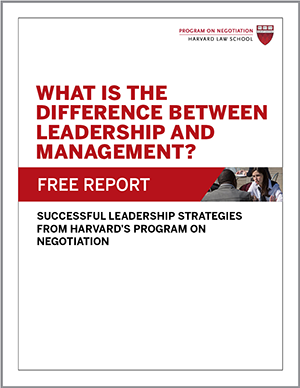
Opening offers lie at the heart of any successful negotiation. Here are four negotiation fundamentals that conflict negotiators should take to heart.
Can a beauty queen lend a hand to help end half a century of conflict in her home country? Miss Universe of 2013 and 2014 Paulina Vega believed she could, and Colombia’s FARC rebels appeared to agree. The South American nation’s first Miss Universe since the 1950s wasn’t been shy about expressing her hopes that two years of negotiations between the rebels and the government would succeed, telling an interviewer in January 2015 that she would even join peace talks if it would help the parties reach a deal.
Public Relations in a Long-Running, Difficult Negotiation
Vega’s comments caught the attention of FARC leaders who wrote to her in early February 2015, inviting her to observe their progress first-hand in Havana. Without batting an eye, Vega responded that she would happily go, if invited first by FARC’s adversary, Colombian President Juan Manuel Santos.
It might be difficult to imagine Miss Universe at the heart of negotiations to end such a bitter conflict, but in a country where more than 200,000 civilians have been killed, Vega’s anointment as Miss Universe was a source of pride. Millions of viewers tuned in to watch the contest, and Colombians rejoiced the following day with widespread celebrations. Santos even declared a national holiday.
For Vega and the FARC, it’s an important mix of leadership and public relations in the heart of a long-running and difficult negotiation. While only a small component of that negotiation, it had been an important one at a critical moment. Their very public back-and-forth shows how fundamental leadership skills and negotiating tactics can help build trust and inject vitality into highly-charged talks.
4 Negotiation Tactics for Making an Impact at the Bargaining Table
Negotiation Tactic #1. Noticing – We often fail to notice the things that might help us succeed in a negotiation, even when they’re right before their eyes. Having previously spent decades in remote jungles, FARC’s invitation to Vega would have been unthinkable even ten years ago. After years of talks, however, the rebels are attuned to a public they rarely encountered before. In hindsight their invitation may seem like common sense, but noticing Vega’s overture in the first place and turning that into an outstretched hand was an unlikely move that shows creative adaptive leadership skills.
Negotiation Tactic #2. Good Timing – As the saying goes, timing is everything. With the potential for an agreement drawing near, the peace negotiations must address some of the most painful issues of the conflict, including human rights abuses. Had their exchange occurred during other stages of the negotiations, Vega’s presence might have been construed as a distraction, but her well-timed entry adds a much-needed humanity, showing a self-awareness of the leadership skills she can bring to the table at an opportune moment.
Negotiation Tactic #3. Help The Other Side – After more than 30 rounds of negotiations in Cuba, the Colombian public has grown more skeptical that peace will come. FARC’s invitation sent the message that the rebels had continued faith in the talks. By replying that she would help, but only at the request of President Santos, Vega enhanced perceptions that the current approach could work.
Ensuring success in a negotiation requires the leadership skills to do something that is counterintuitive for many—help the other side overcome their barriers away from the table. By countering negative perceptions of the possibility for a deal, Vega and the FARC gave Santos room to continue to negotiate.
Negotiation Tactic #4. Interests Matter, Not Positions – Ultimately, by setting aside short term positions, the unlikely duo—rebels and Miss Universe—used uncommon leadership skills to recognize a shared interest and improve the chances of continued public support for a successful outcome in Havana.
In June 2016, the first step in ending the conflict started with Santos and FARC signing a ceasefire. This was the first major step after more than fifty years of conflict. On August 25, 2016, Santos announced that they had reached a peace deal with FARC after four long years of negotiation. The first referendum failed, however after a revision, the peace deal was approved on November 30, 2016 by the Columbian Congress.
Related Leadership Skills Article: Negotiations in Real Life: The Habits of Great Women Leaders
Originally published in 2015.





No Responses to “Conflict Negotiators Turn to Miss Universe”